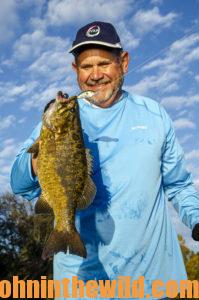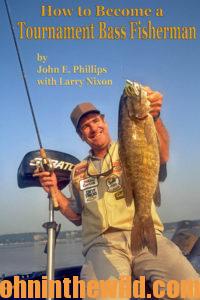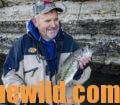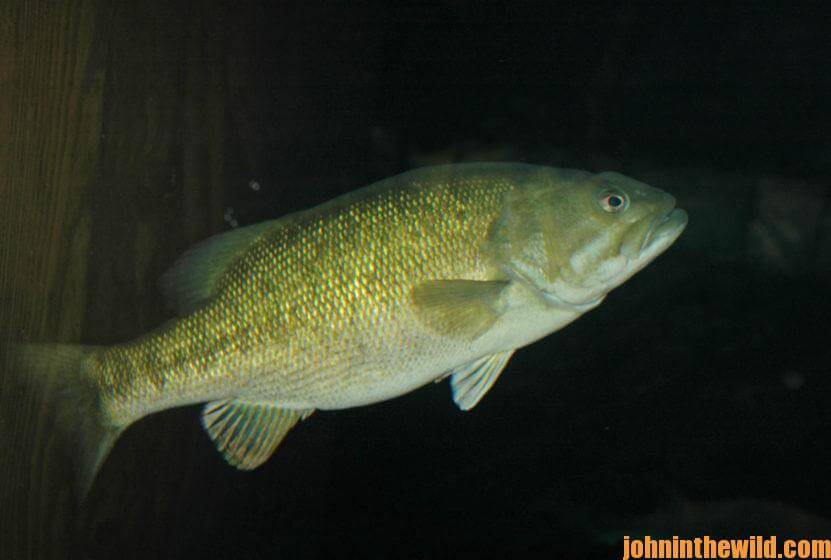Editor’s Note: Nolan Shivers of Birmingham. Alabama, and his fishing buddy, Cap Wilover, brought in a box full of smallmouth bass to be mounted at my brother Archie Phillips’ taxidermy shop years ago. They had 10 smallmouth bass, weighing a total of 98 pounds, that they wanted to be mounted on a stringer. That was the biggest catch of smallmouth I ever had seen in my life. When I asked Shivers how they caught those smallmouths, he explained that they caught them minnow fishing below Wheeler Dam on Wilson Lake on the Tennessee River in swift water within 50 yards of the dam down to 2 miles past the dam on shell banks, Indian mounds, drop-offs and ledges. During the fall and winter months, the smallmouths and other bass on the Tennessee River gang-up near the dams, because the water coming from the hydroelectric plants is warmer than the water in the Tennessee River lakes and feed on shad minnows. A few weeks ago, I fished The Tennessee River’s Pickwick Lake on the borders of Tennessee/Alabama/Mississippi with Brad Whitehead of Muscle Shoals, Alabama, guide ([email protected]) and (https://www.facebook.com/people/Brad-Whitehead/100008425833568) and Ronnie Leatherwood of Killen, Alabama.
“In cool weather, the smallmouths like to position themselves, so they can look out into the current and attack bait as it comes by the off-current structure where they’re concentrating,” Ronnie Leatherwood reports. “The secret to successfully fishing minnows on the bluffs is to cast the minnow upcurrent with no lead and close enough to the bluff that the minnow will swim down naturally along the side of the bluff where the smallmouth’s holding. That’s the difference between fishing and catching.
“If the water temperature’s 70 degrees or higher in the fall, I’ve caught and released as many as 50 – 100 bass in a day at Pickwick Lake. But when the water cools-off, and the water level of the lake drops, I only may catch 20 or 30 bass in a day of fishing. These smallmouths will average 4-1/2 pounds, with the biggest ones being 6 to 8 pounders. To fish the bluffs correctly, bring plenty of hooks. I buy 50 to 100 hooks every time I go smallmouth fishing. If you’re not getting hung and breaking off when fishing the bluffs, then you’re not fishing where the smallmouths are holding.”
 Leatherwood uses two types of shad minnows when fishing for smallmouths – threadfin shad and gizzard shad. “The gizzard shad has a round nose, and a threadfin shad has an arrow-shaped nose and an almost yellow-chartreuse tint. When I catch my minnows, I try and keep the water temperature in my bait tank the same temperature as the water in which the shad have been swimming. Although the water temperature in the lake can change drastically, if I use the same water that I’ve caught the minnows in to fill-up my bait tank, then the minnows won’t go through a shock like they will if I catch them in warm water and then add colder water from another part of the lake into my tank.”
Leatherwood uses two types of shad minnows when fishing for smallmouths – threadfin shad and gizzard shad. “The gizzard shad has a round nose, and a threadfin shad has an arrow-shaped nose and an almost yellow-chartreuse tint. When I catch my minnows, I try and keep the water temperature in my bait tank the same temperature as the water in which the shad have been swimming. Although the water temperature in the lake can change drastically, if I use the same water that I’ve caught the minnows in to fill-up my bait tank, then the minnows won’t go through a shock like they will if I catch them in warm water and then add colder water from another part of the lake into my tank.”
Leatherwood is convinced that where you hook the minnow is critically important to your bass fishing success. “There’s a piece of cartilage between the minnow’s eyes and its nose. I try and put my hook in the front side of its eye, go through both eyes, let my hook push through that cartilage and come out the opposite eye. Then I’m not damaging the eyes and have a good safe place for my hook to allow the minnow to swim as actively as it wants to swim. Too, my minnow doesn’t come off my hook very easily. Another important key is once you cast the minnow upcurrent, you need to hold your line up high off the water. Then the current won’t take your line and pull the minnow downstream. This process allows the minnow to swim down naturally and make a better presentation to the smallmouths waiting to attack.
“One of my favorite places to fish is where there’s a transition from the bluff to gravel. The smallmouths will feed on crawfish in those places as long as the crawfish easily can be caught.
However, as the weather gets cooler, and the water becomes colder, the crawfish will go into hibernation – making the shad minnows instead of the crawfish easier to find, catch and eat. I have fished with crawfish before, but the crawfish will go up under a rock or a piece of wood and hide. Then I get hung-up many more times while fishing with crawfish than I do fishing with live minnows.
“Pickwick Lake is so good for fishing in the fall and winter months for smallmouths – big smallmouths – because these fish are feeding-up not only for cold weather but also in preparation for the spawn. They may put on 1 – 1-1/2 pounds of body weight for the winter and also to get their bodies in condition for the spawn.”
For further information about Pickwick Lake, contact Colbert County Tourism
(www.colbertcountytourism.org), or call 800-334-0783. A great place to stay is the Cold Water Inn in Tuscumbia, Alabama, for delicious food and very-nice rooms. Call 855-249-1953, and visit (http://coldwaterinn.com).
To learn more about bass fishing, go to John E. Phillips’ book, “How to Become a Tournament Bass Fisherman” available in Kindle at http://amzn.to/11HF583
Tomorrow: How Ronnie Leatherwood Discovered Bluff Fishing for Pickwick’s Fall Bass with Live Bait










